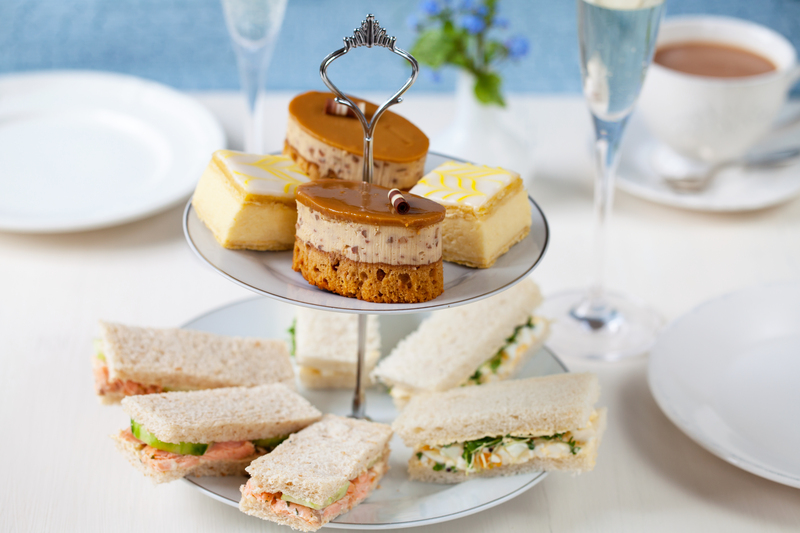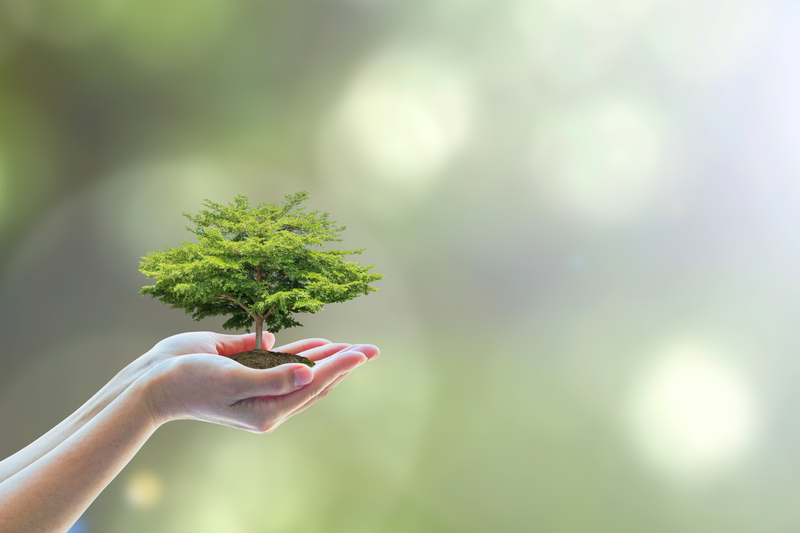Find Peace in Simplicity: The Journey to Decluttering and Minimalist Living
Are you feeling overwhelmed by clutter, never-ending to-do lists, or the chaos of modern life? Discovering peace and contentment may be easier than you think. Many people are finding relief through minimalist living and the power of decluttering their environments. This comprehensive guide will take you through the steps, strategies, and transformative benefits of embracing a simpler lifestyle, so you can truly find peace in simplicity.
The Allure of Minimalism: Why Less Is More
Minimalism isn't just an interior design trend or a temporary fad--it's a philosophy centered around intentional living. A minimalist lifestyle invites you to focus on what you truly value, shedding excess possessions, habits, and obligations. The goal? To cultivate a sense of peace, clarity, and freedom.
Let's explore why so many people are seeking peace through simplicity and the unique benefits of eliminating clutter:
- Improved Mental Well-being: A tidy, uncluttered space can reduce anxiety and foster calm.
- Increased Productivity: Fewer distractions mean better focus.
- Financial Benefits: Buying less saves money and avoids debts.
- Enhanced Creativity: A clean environment encourages fresh ideas.
- More Time for What Matters: Less time spent maintaining things means more time for hobbies and loved ones.
What Is Decluttering?
Decluttering refers to the act of removing unnecessary items from your surroundings. It's more than just cleaning; it's about intentionally keeping only what brings value and joy. Through decluttering your home, you pave the way for minimalist living--an ongoing practice of simplicity.

Understanding Minimalist Living: A Way of Life
At its core, minimalist living is about living intentionally with fewer possessions, less stress, and more purpose. It encourages you to prioritize quality over quantity, find satisfaction in simplicity, and build a life aligned with your personal values.
Principles of Minimalist Living
The journey to minimalist living involves several guiding principles:
- Intentionality: Choose what you allow into your space and life.
- Quality not Quantity: Invest in fewer, better items that last.
- Mindfulness: Focus on the present and appreciate what you have.
- Purposeful Consumption: Resist mindless shopping and avoid impulse purchases.
- Simplicity: Seek ease and clarity in your surroundings, schedule, and mind.
These principles guide you to find peace by decluttering and help you cultivate a calm, focused lifestyle.
The Emotional Impact of Clutter
Clutter isn't just a physical problem--it's often an emotional one. Each item we own can carry symbolic weight, memories, or guilt. Learning how to declutter requires us to confront these emotions, making the process both challenging and rewarding.
Why Do We Accumulate Clutter?
- Emotional Attachments: We hold onto items for sentimental reasons.
- Fear of Future Need: "What if I need this someday?"
- Aspiration: Items that represent the person we want to be.
- Gift Guilt: Keeping things out of obligation.
Recognizing these patterns empowers you to let go and find peace in simplicity.
Starting Your Decluttering Journey: Step-by-Step Guide
Ready to embrace minimalist living and create a peaceful home? Follow this step-by-step guide to start your decluttering journey:
Step 1: Set Your Intentions
Define your motivation. Is it to create a tranquil home? Reduce stress? Free up time? By understanding why you want to declutter, you'll stay motivated through the process.
Step 2: Start Small
Decluttering can be overwhelming at first. Begin with a single drawer, a shelf, or one section of your closet. Celebrate small victories before tackling larger spaces.
Step 3: Sort and Assess
- Take all items from the target space.
- Group similar items together.
- Ask yourself: Do I use this? Does it bring me joy? Is it essential?
Immediately sort items into piles: keep, donate, recycle, or discard.
Step 4: Let Go Mindfully
This may be the most difficult step in the minimalist journey. Practice gratitude for the usefulness or memories each item has provided, then let go with intention. Remember: every item you release makes more space for peace and clarity.
Step 5: Organize What Remains
Arrange your chosen possessions in a way that is functional and visually calming. A place for everything, and everything in its place.
Step 6: Adopt New Habits
Minimalism is ongoing. Avoid bringing unnecessary clutter back into your life by shopping mindfully, reassessing possessions regularly, and prioritizing what truly matters.
Room-by-Room Decluttering Strategies
- Bedroom: Keep only essential and loved items. Clear nightstands and closets of unused things.
- Living Room: Reduce decor to pieces that inspire calm. Organize electronics and limit visible cords.
- Kitchen: Eliminate duplicate utensils and expired foods. Store frequently used items within reach.
- Bathroom: Dispose of old products, keep surfaces clean, and use storage to minimize clutter.
- Office: Digitize paperwork, limit office supplies, and create a clutter-free workstation.
Minimalism Beyond Your Home: Simplifying Life
Finding peace in simplicity goes beyond decluttering your physical environment. Consider applying minimalist principles to other parts of your life:
Simplify Your Schedule
- Prioritize activities that align with your values.
- Say "no" to obligations that drain your energy or time.
- Embrace white space in your calendar for rest and reflection.
Minimal Digital Life
- Unsubscribe from unnecessary emails.
- Organize files and photos into clear folders.
- Limit time on social media to prevent mental clutter.
Streamline Finances
- Audit recurring expenses and cancel unused subscriptions.
- Automate savings and bill payments.
- Buy only what you need and value.
The Deep Benefits of Simplicity and Minimalist Living
Adopting minimalist living is truly transformative. Here's what you may gain:
- Emotional Clarity: Less distraction, more internal peace.
- Better Relationships: More time and energy to invest in loved ones.
- Greater Happiness: Satisfaction comes from meaning, not things.
- Enhanced Personal Growth: Space to explore passions and cultivate self-awareness.
Peace Through Simplicity: Real-life Stories
Countless people have reclaimed their lives by embracing simple, clutter-free living. These stories of transformation commonly feature:
- Improved sleep and relaxation.
- Rediscovered interests and hobbies.
- Reduced anxiety and stress.
- A sense of freedom and lightness.
Minimalism isn't about deprivation; rather, it's about gaining so much more than you give away.
Frequently Asked Questions: Minimalist Living and Decluttering
Q: Isn't Minimalism Too Extreme for Most People?
Minimalism is flexible. You decide what "enough" means for you. Some keep a capsule wardrobe, while others simply reduce visible clutter. The key is intentionality and peace, not strict rules.
Q: How Do I Stay Motivated to Declutter?
Focus on your goals: a calm mind, better focus, or more free time. Celebrate small wins and visualize the peaceful space you're creating.
Q: What If I Feel Guilty Getting Rid of Gifts or Sentimental Items?
It's normal! Express gratitude for the memory or thought behind the item. Letting go does not diminish the value of your relationships or experiences.
Q: Can Minimalism Help with Mental Health?
Yes. Many report that decluttered environments lead to lower anxiety and better focus. A simpler schedule also reduces overwhelm.
Tips for Maintaining Minimalist Living
- Practice "One In, One Out": Whenever you buy something new, donate or discard an old item.
- Regular Declutter Sessions: Schedule monthly or seasonal check-ins to reassess your space.
- Mindful Shopping: Pause before purchases and ask: Do I truly need this?
- Set Visual Reminders: Place affirmations around your home to reinforce your intention for living simply.

Minimalist Living for Families
Bringing simplicity into a family home is possible--with teamwork and patience. Involve everyone in decluttering sessions, teaching the value of gratitude and mindful consumption. Focus on shared experiences over things, and model the benefits of peaceful, uncluttered living.
Simple Family Habits:
- Declutter toys and clothes together quarterly.
- Establish simple routines--like evening clean-ups or minimal gift-giving.
- Spend quality time doing free activities (walks, games, cooking).
Concluding Thoughts: Embrace Your Journey to Peaceful Simplicity
Decluttering and minimalist living offer a pathway to profound peace, contentment, and clarity. By letting go of the unnecessary, you make room for what matters most--be it tranquility, creativity, growth, or meaningful relationships. It's not about empty spaces; it's about filling your life with intention.
Start small, move forward with patience, and celebrate your progress. Let the journey to simple, peaceful living transform your world, one space at a time.
If you're ready to find peace in simplicity, now is the perfect time to begin.
Recommended Resources
- Books: "The Life-Changing Magic of Tidying Up" by Marie Kondo; "Essentialism" by Greg McKeown
- Tools: Donation centers, minimalist blogs, digital decluttering apps
- Support: Online communities, accountability partners
Remember: Simplicity isn't about having less; it's about making space for more of what matters.